214
JOURNAL OF SCIENCE AND TECHNOLOGY DONG NAI TECHNOLOGY UNIVERSITY
Special Issue
OPTIMIZATION OF RING REMOTE PHOSPHOR STRUCTURE FOR LASER-BASED WHITE LIGHTING APPLICATIONS
Nguyen Duc Quy*
Dong Nai Technology University *Corresponding author: nguyenducquy@dntu.edu.vn
GENERAL INFORMATION
Received date: 28/03/2024
Revised date: 23/05/2024
Accepted date: 04/07/2024
KEYWORD
Laser;
Ray-Tracing;
Ring Remote Phosphor Structure;
ABSTRACT This study optimizes ring remote phosphor structures for laser-based white lighting applications; it delves into the pursuit of high-brightness and high-luminance lighting solutions that blue laser diodes (LDs) hold promising potential. Nonetheless, challenges arise from the use of conventional phosphor gel formulations--effective in white LEDs--as they tend to carbonize under focused laser irradiation: a problem we aim to mitigate. In order to tackle this issue, we investigate the ring remote phosphor structure as a potential method for guiding laser light from LDs towards adjacent phosphor layers; this strategy helps alleviate the negative impacts of concentrated laser irradiation. Utilizing ray-tracing simulations allows us to scrutinize and analyze the performance of our selected structure under different design parameters: notably, the half-angle of an inverted cone lens and the space between LD and encapsulant. Our findings underscore optimal setups that can achieve favorable lighting results while carefully balancing elements such as divergence and intensity. This research actively advances laser-based white lighting technology, thereby paving a path for superior.
1. INTRODUCTION
for signaled featuring the automotive series production innovative this significant milestone industry; it commencement technology (Mou et al., 2022).
The realm of laser-based white
lighting emerges from
Blue laser diodes (LDs) a cutting-edge advancement in lighting technology, offer numerous advantages: compact dimensions; minimal beam divergence; and impressive efficiency. These traits make blue LDs exceptionally apt for an extensive range of applications requiring high brightness and luminance levels from laser projectors to automotive headlamps, even including general lighting applications (Chen et al., 2022). The introduction of laser headlights in vehicles such as the BMW i8 and Audi R8 LMX marked a light technology, which involves merging blue laser beams with down-converting color converters - usually phosphors integrated in silicone gel matrices, presents one of the most promising innovation. Yet a avenues for significant obstacle the constraints posed by traditional phosphor gel formulations that we carefully optimize for
215
JOURNAL OF SCIENCE AND TECHNOLOGY DONG NAI TECHNOLOGY UNIVERSITY
Special Issue
white light-emitting diodes (LEDs) (Zhang et al., 2022). Under focused laser irradiation, these conventional phosphor gels can carbonize making them unsuitable for applications in laser-based lighting (Li et al., 2022).
between laser emission and excitation from the phosphors; effectively mitigate adverse effects from concentrated laser irradiation. In doing so – we pave our path towards integrating diverse lighting applications with seamless precision that characterizes all aspects of high-tech brilliance found within white-light technology based on lasers.
recognition that high-density
Figure 1 (a)The structure of the ring remote phosphor structure, (b) The parameters of the inverted cone lens encapsulant discussed in this study .
2.RAY-TRACING SIMULATION
To analyze comprehensively
The active pursuit of alternative phosphor converters specifically single crystal phosphors and phosphor ceramics has fervently begun: a laser clear irradiation issues pose significant impediments. Nevertheless, prohibitive costs linked to these their innovative materials have hindered widespread adoption; therefore, there is an urgent need for a paradigm shift towards novel structural designs capable of circumventing such challenges (Trivellin et al., 2017). The pursuit actively addresses this challenge by fervently engaging in the search for alternative phosphor converters; specifically, single crystal phosphors and phosphor ceramics novel materials with promising potential: indeed they hold the key to circumventing issues posed by high-density laser irradiation.
a adoption the
the performance of the proposed ring remote phosphor structure, ray-tracing simulations were employed. These simulations were intricate in evaluating instrumental dynamics governing the interaction between laser light emitted by LDs and the surrounding phosphor layer. Key parameters investigated included the design variations of the inverted cone lens encapsulant, characterized by different half-angles (α), and the distances (z) between the LD and the encapsulant.
However, prohibitive costs are impeding situation their widespread necessitating nothing short of a paradigm shift towards innovative structural designs capable of mitigating these challenges. Your sentence appears to be missing. Please provide the sentence you'd like me to rewrite in active voice with graduate level punctuation as instructed without including "indeed" or any exclamation points (Chen et al., 2022; Yang et al., 2017; Zhou Qing-chao et al., 2015).
In our simulations, we assumed a radius of 5mm for the inverted cone lens encapsulant and a refractive index (ne) of 1.5 for the encapsulant material. Notably, internal reflection total occurs at the surface of the inverted cone lens, contingent upon the angle of incidence relative to the critical angle (θc) of 41.81 degrees, as depicted in Fig2(a).
Our group's foundational research on ring remote phosphor structures for white LEDs serves as a launching pad in the present study. We leverage this expertise to investigate how we can adapt these same structures, facilitating directed transmission of LDs emitted laser light onto their surrounding phosphor layer. Our aim is twofold: orchestrate an intricate interplay
216
JOURNAL OF SCIENCE AND TECHNOLOGY DONG NAI TECHNOLOGY UNIVERSITY
Special Issue
to elucidate elucidating the influence of varying α and z configurations.
these
commercial for
Divergence Angle: Fig. 3(a) illustrates the divergence angle as a function of the half-angle of the inverted cone lens (α). It was observed the divergence angle exhibited an that increasing trend with larger values of α. Consequently, inverted cone lens encapsulants with larger α values contributed to greater divergence in the transmitted light. Notably, configurations with an α of 45 degrees and a distance (z) of 3 mm emerged as particularly noteworthy lighting applications, striking a balance between divergence and efficacy.
Various combinations of α and z were systematically explored their impact on the intensity distribution of the transmitted light. Specifically, α values ranging from 30 to 50 degrees were investigated, along with corresponding distances (z) of 1, 3, 5, 7, and 9mm. The divergence angle and maximum intensity of the intensity distribution were quantified to discern the optimal configurations for achieving desirable lighting outcomes. The insights gleaned ray-tracing from simulations serve as a pivotal foundation for understanding the intricate optical phenomena governing the performance of the ring remote phosphor structure. By elucidating the interplay lighting between design parameters and characteristics, these simulations pave the way for informed design refinements aimed at optimizing the efficacy and efficiency of laser- based white lighting applications
Maximum Intensity: Fig. 3(b) depicts the relationship between the maximum intensity of the intensity distribution and the half-angle of the inverted cone lens (α). When z was assumed to be 1, 3, and 5 mm, it was noted that the maximum intensity decreased with increasing α values. However, for larger values of z, an optimal maximum intensity was observed. Intriguingly, it was found that the maximum intensity increased with increasing z when α was set to 35 degrees, underscoring the nuanced interplay between design parameters.
Figure 2 (a) The The total internal reflection occurs at the inverted cone lens surface with corresponding inverted cone lens , and (b) The divergence angle and the maximum intensity of the intensity distribution defined in this study.
3. SIMULATION RESULTS
inverted cone the lighting integration their
These simulation results offer valuable insights into the performance characteristics of the ring remote phosphor structure and provide a basis for informed design optimizations. By discerning the intricate relationships between α, z, and lighting attributes, these findings pave the way for the refinement and enhancement of technologies, laser-based white propelling into diverse applications with heightened efficacy and efficiency. to The analysis of the ray-tracing simulations yielded valuable insights into the performance lens characteristics of encapsulant within the ring remote phosphor structure. Here, we present the key findings the divergence angle and pertaining maximum intensity of the transmitted light,
217
JOURNAL OF SCIENCE AND TECHNOLOGY DONG NAI TECHNOLOGY UNIVERSITY
Special Issue
Figure 3 (a) The divergence angle and (b) maximum intensity of the inverted cone lens encapsulant under different distance z and inverted cone lens α.
4. DISCUSSION
The results from
necessitating
The influence of distance (z) between the LD and the inverted cone lens encapsulant on maximum intensity highlights the significance of spatial considerations in phosphor structure design. Notably, the observed increase in maximum intensity with increasing z for α = 35 degrees underscores the intricate interplay lighting between design parameters and careful characteristics, optimization to harness the full potential of the phosphor structure.
for
the simulation give understanding into many important factors that affect how well the ring remote phosphor structure works in laser-based white lighting uses. This talk looks at what these discoveries mean and examines why they are important for design improvement and real-life use. The growing divergence angle noticed when α gets bigger highlights a balance between optical potency and light scattering. Although setups having bigger α values give more divergence, they might show less optical effectiveness. So finding a middle ground for these conflicting things is very important to make the phosphor structure perform best in certain lighting needs. and optimizations these facilitate findings of The identification
The insights gleaned from these simulation results offer valuable guidance the refinement and enhancement of laser-based white lighting technologies. By informing parameter design adjustments, the development of more efficient and effective lighting systems capable of meeting diverse application requirements
in achieving desired 5. CONCLUSION
optimal configurations, such as α = 45 degrees and z = 3 mm for commercial lighting applications, underscores the importance of tailored design parameters lighting outcomes. These configurations offer a favorable compromise between divergence and intensity, making them well-suited for practical implementation in real-world lighting systems.
The study gives a full examination of using ring remote phosphor structures for white lighting from lasers. They use ray-tracing simulations to deeply investigate the performance traits of their suggested
218
JOURNAL OF SCIENCE AND TECHNOLOGY DONG NAI TECHNOLOGY UNIVERSITY
Special Issue
phosphor structure, concentrating on important elements that affect its effectiveness and efficiency.
help
structures
performances of white laser lighting by reflective phosphor converter. high Journal of Alloys and Compounds, 918, 165637. https://doi.org/10.1016/j.jallcom.2022.16 5637
balanced.
Trivellin, N., Yushchenko, M., Buffolo, M., De Santi, C., Meneghini, M., Meneghesso, G., & Zanoni, E. (2017). Laser-Based Lighting: Experimental Analysis and Perspectives. Materials, 10(10), 1166. https://doi.org/10.3390/ma10101166
on Research
source of VLC
49(4),
The results emphasize how ring remote phosphor overcome could difficulties linked to high-density laser radiation, providing a feasible answer for the growth of white lighting technology based on lasers. By making changes in design like selecting suitable half-angles (α) and distances (z), we can find out best setups to lighting effects while keeping get wanted divergence The intensity and understanding gained from this study is very important for improving the effectiveness and efficiency of light technology based on lasers, which will lead to better use in different lighting the understanding of design needs. Through refinements and parameter adjustments, these findings assist in the continuous development of laser-driven solid-state lighting. They are a crucial part of advancing advancements and improvements in this area.
REFERENCES Yang, J., Liu, Z., Xue, B., Wang, J., & Li, J. phosphor- (2017). conversion laser-based white light used and as optical illumination. Optical and Quantum Electronics, 173. https://doi.org/10.1007/s11082-017- 1006-7
Chen, B.-M., Ying, S.-P., Huang, H.-L., & Cheng, Y.-C. (2022). Cylindrical Rod Phosphor Structure for Laser-Driven White Lighting. Coatings, 12(11), 1637. https://doi.org/10.3390/coatings1211163 7
Zhang, J., Wang, L., Xu, F., Wang, L., Xu, L., Zhu, Q., Liang, X., & Xiang, W. (2022). High-efficiency phosphor-in-glass with ultra-high color rendering indexing for white laser diode lighting. Ceramics International, 1682–1689. 48(2), https://doi.org/10.1016/j.ceramint.2021.0 9.247
Li, S., Guo, Y., & Xie, R.-J. (2022). Laser Phosphors for Next-Generation Lighting Applications. Accounts of Materials Research, 1299–1308. 3(12), https://doi.org/10.1021/accountsmr.2c00 193
Mou, Y., Yu, Z., Lei, Z., Chen, M., & Peng, Y. opto-thermal Enhancing (2022). Zhou Qing-chao, 周青超, Bai Ze-long, 柏泽龙, Lu Lu, 鲁路, & Zhong Hai-zheng, 钟海政 . (2015). Remote phosphor technology for white LED applications: Advances and prospects. Chinese Optics, 8(3), 313–328. https://doi.org/10.3788/co.20150803.0313

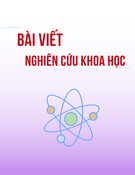

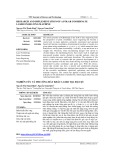
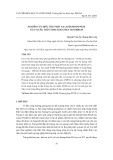
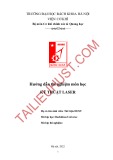
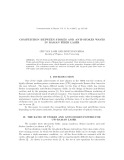
![Giáo trình Công nghệ laser Phần 1: [Thêm thông tin chi tiết để tối ưu SEO]](https://cdn.tailieu.vn/images/document/thumbnail/2015/20151207/gaugau1905/135x160/66221901.jpg)
![Tài liệu Laser: Tổng hợp [mô tả chi tiết hơn về loại tài liệu hoặc ứng dụng]](https://cdn.tailieu.vn/images/document/thumbnail/2015/20150311/dmanh87/135x160/1746414_346.jpg)
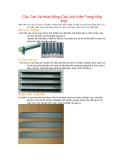
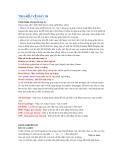
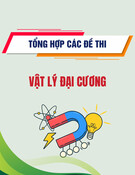
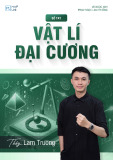
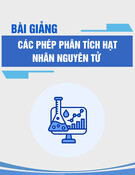
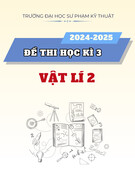
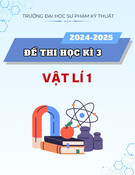
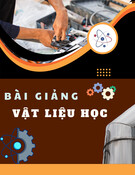
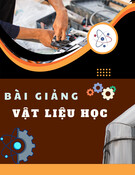
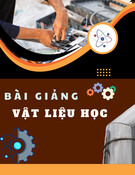
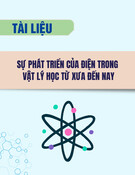
![Bộ câu hỏi lý thuyết Vật lý đại cương 2 [chuẩn nhất/mới nhất]](https://cdn.tailieu.vn/images/document/thumbnail/2025/20251003/kimphuong1001/135x160/74511759476041.jpg)
![Bài giảng Vật lý đại cương Chương 4 Học viện Kỹ thuật mật mã [Chuẩn SEO]](https://cdn.tailieu.vn/images/document/thumbnail/2025/20250925/kimphuong1001/135x160/46461758790667.jpg)




